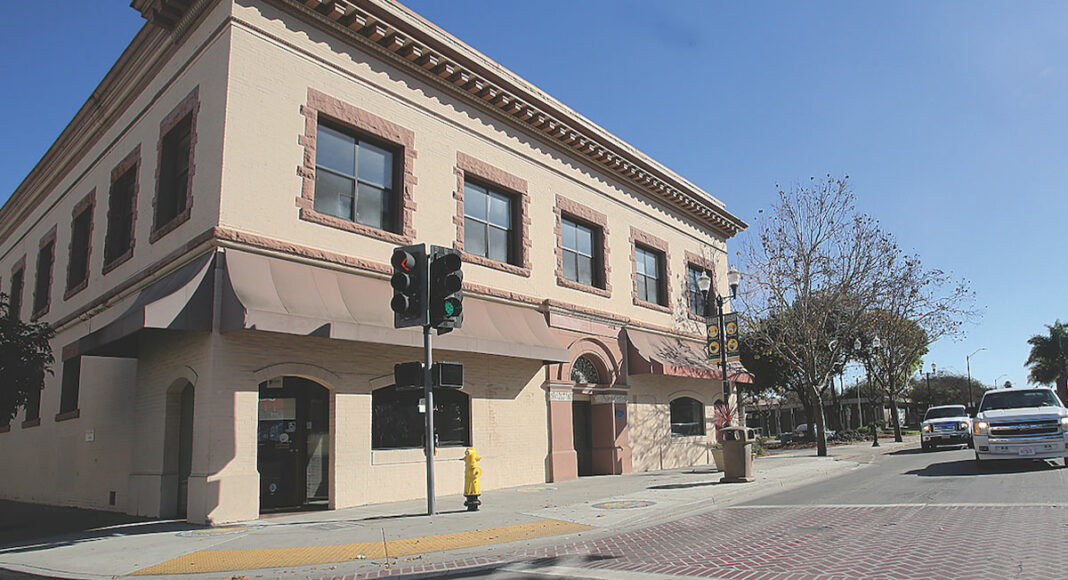The historic Porter Building in downtown Watsonville will not be sold to the Pajaro Valley Arts (PV Arts) Council—it won’t be sold to the owners of this publication, either.
At least not anytime soon.
Ongoing discussions between the city of Watsonville and PV Arts around the vacant city-owned building have halted because of Assembly Bill 1486, also known as the Surplus Land Act. That bill requires jurisdictions to make all “surplus” properties—defined broadly as land that is not currently in use by cities, counties and districts—to be made available to affordable housing developers before they can be sold.
Watsonville Assistant City Manager Tamara Vides said the city council found out about the requirement from a real estate lawyer while it was trying to arrange a deal to sell the building to PV Arts.
The city council at its March 23 meeting is expected to address the situation publicly and declare the property as a “surplus.” When that happens, the city will then need to notify the state that it intends to sell the property, and its housing department will need to notify affordable housing developers to see if they are interested in the vacant two-story, 15,000-square-foot building, which has stood at the corner of Main Street and Maple Avenue since 1903.
“If someone is interested in the property, then this city is obligated to negotiate for housing first,” Vides said.
The Surplus Land Act was approved by state lawmakers in 2019, just weeks before the city sent out a request for proposals regarding the Porter Building. It went into effect on Jan. 1, 2020.
Under the law, affordable housing developers have 60 days to state their interest after a jurisdiction declares the property a surplus. If a developer does step forward, the jurisdiction must enter into “good-faith” negotiations with them for 90 days.
If no developer shows interest in the property, or if a deal cannot be reached in the subsequent 90 days, then the property can be sold.
Only after that period expires can the city continue negotiations with PV Arts or any other entity interested in the property that is not an affordable housing developer.
“If a feasible housing project were to come up, if that’s the will of council then, that’s the direction the project will be moving,” Vides said. “If that doesn’t happen, I would think the council would be interested in restarting negotiations with PV Arts.”
Those negotiations have been ongoing behind closed doors since WatsNews LLC CEO Dan Pulcrano put a pause on his proposal for the building. Pulcrano in an editorial in the Pajaronian said he made the decision because he did not want to halt PV Arts’ plans of expanding arts in Watsonville and sow “unnecessary division in the community.”
“The city of Watsonville should continue to pursue sensible economic growth strategies so that downtown can return as the heart of the city and maximize revenues to fund services,” he wrote. “It should also embrace the arts as a vital element of community life. Both goals should proceed in tandem, not at the expense of one another.”
Both PV Arts, a nonprofit established in 1984, and WatsNews LLC, a company Pulcrano established in 2019 after he purchased the 153-year-old Pajaronian, showed their plans in a fiery October 2020 city council meeting.
PV Arts had planned to build a haven for artists with gallery exhibits, art retail space and a multipurpose room for performances, meetings, events, workshops and additional special exhibits. Several classrooms for seniors and young people and artists’ studios were also in their plans.
PV Arts Treasurer Judy Stabile said the nonprofit would use the building to expand its longstanding art shows, classes and retail opportunities currently found at its Sudden Street location—a spot it rents from the city at almost no cost. Stabile added that the Porter Building would be a “stepping stone” for a much larger project currently in its infancy: a massive community arts and performing center.
Pulcrano, CEO and owner of the Santa Cruz Good Times and San Jose’s Metro Silicon Valley, planned to create a casual dining Italian restaurant with well-known restaurateur Joe Cirone, emphasizing locally sourced ingredients, and a wine bar and food market highlighting Santa Cruz Mountains vineyards, Pajaro Valley farms and artisanal producers. The project also called for a “boutique” micro-hotel and a “creative space” for community institutions as well as the Pajaronian.
Pulcrano said his plan would have provided anywhere between 50-100 jobs, and he called it a “catalyst” for downtown.
“Watsonville has nowhere to go but up,” Pulcrano said. “If we do the downtown right … it’s going to be a powerhouse.”
But several in attendance at the meeting said his plan “raised some red flags” about it leading to gentrification.
The original request for proposals said the city wanted ideas that would maximize the building’s potential by bringing an entertainment or retail-related business to the first floor.
The building was nearly sold in 2015 after Ceiba College Prep Academy moved out, but a deal with Walnut Creek’s Novin Development fell through.
It has sat empty since.
The building served as the post office until 1913 and has also served as a dentist office and an army surplus store.
It was one of the few historic buildings in Watsonville’s downtown that survived the 1989 Loma Prieta Earthquake with minimal damage.













